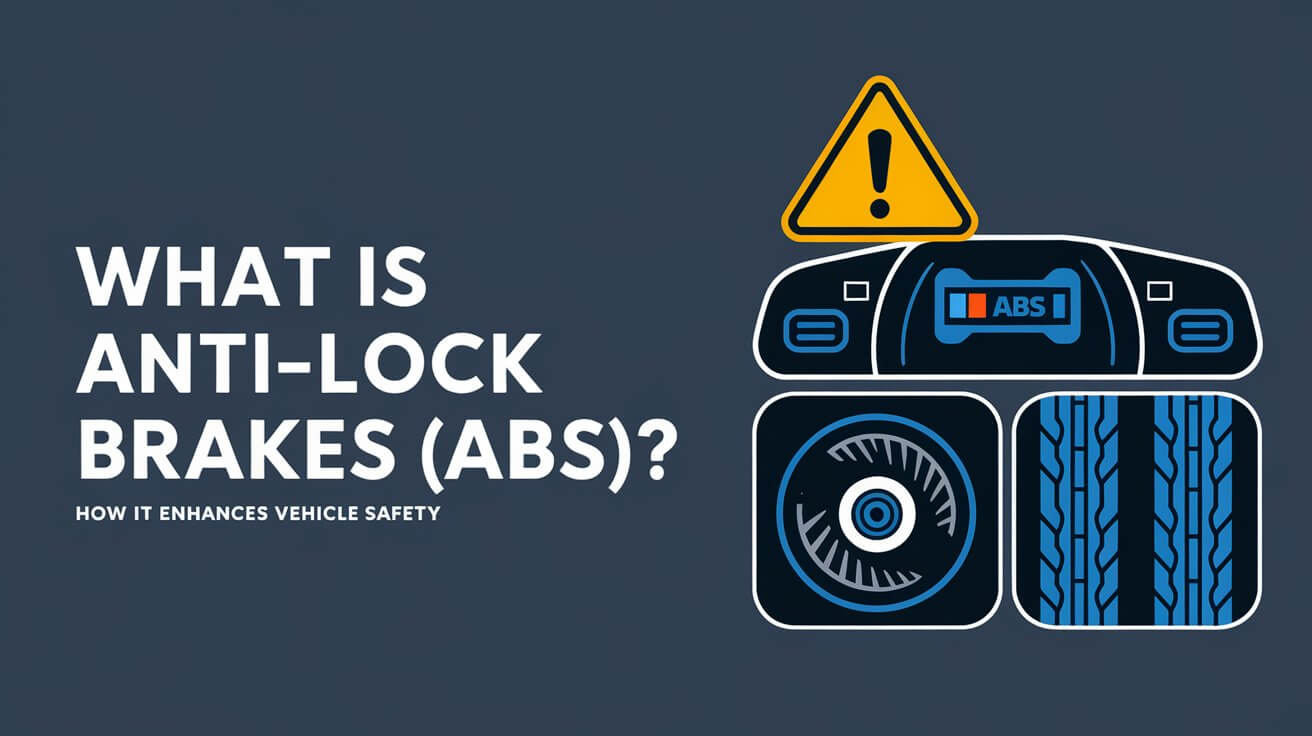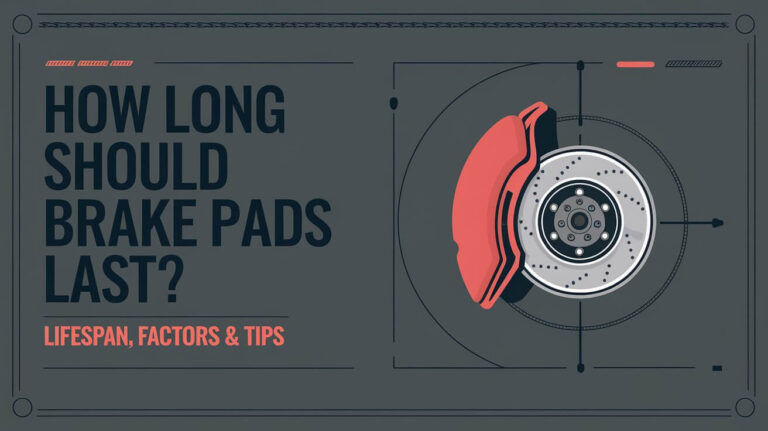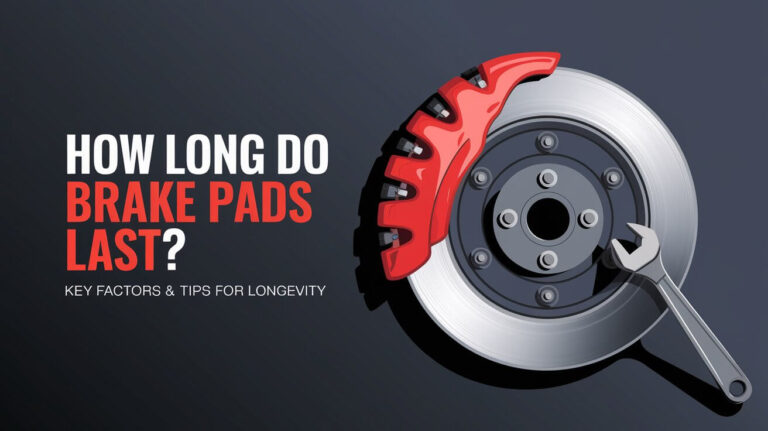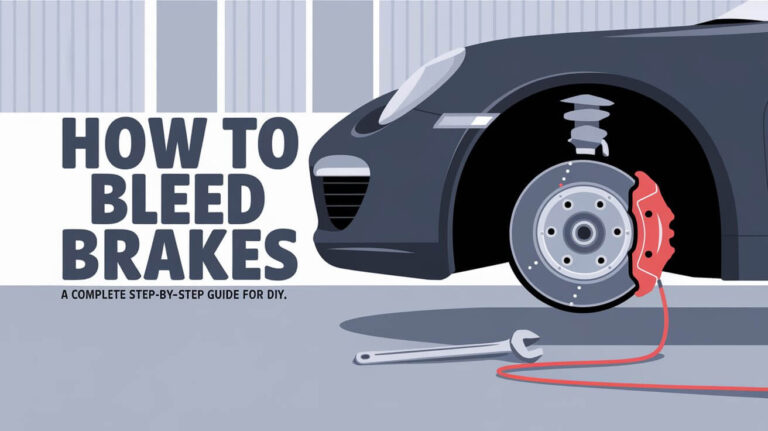What Is Anti-Lock Brakes (ABS) and How It Enhances Vehicle Safety

Anti-lock brakes (ABS) are an essential safety feature in modern vehicles, designed to prevent the wheels from locking up during heavy braking. This allows drivers to maintain control of their vehicles, especially during emergency braking situations or on slippery surfaces. By preventing wheel lock-up, ABS helps to maintain steering control, reducing the risk of skidding and accidents.
ABS plays a crucial role in enhancing road safety, especially in adverse conditions like rain, snow, or ice. Whether you’re an experienced driver or new behind the wheel, understanding how ABS works and its benefits can significantly improve your driving confidence.
How Does Anti-Lock Braking System (ABS) Work?
Components of ABS
ABS is made up of several key components that work together to ensure the vehicle’s wheels don’t lock up during braking:
- Speed Sensors: These are installed on each wheel and monitor the wheel’s speed. If a wheel is about to lock up, the sensors send a signal to the ABS control module.
- ABS Control Module: This is the system’s “brain.” It processes data from the speed sensors and determines when and how to adjust the braking force.
- Hydraulic Valves: These modulate the brake pressure on each wheel. When the ABS control module detects a lock-up, the valves reduce the brake pressure to prevent skidding.
- Brake Lines: They carry brake fluid to the system, ensuring the brakes function effectively.
The ABS Process
ABS works by rapidly adjusting the brake pressure applied to the wheels. When you brake hard, ABS steps in to prevent the wheels from locking up. It does this by pulsing the brakes—rapidly applying and releasing brake pressure multiple times per second. This allows the wheels to maintain some rotation, which is crucial for steering control. The process happens so quickly that most drivers won’t feel the system working, except for a slight vibration or pulsing in the brake pedal.
Types of Anti-Lock Braking Systems
There are different types of ABS systems, each suited to specific types of vehicles or driving conditions. The main types include:
Four-Channel/Four-Sensor ABS
This is the most advanced and common ABS system found in modern vehicles. It uses a separate sensor and valve for each wheel, providing maximum control. The system monitors and adjusts the braking pressure on each wheel independently, ensuring that none of the wheels lock up during braking. This type is highly effective for preventing skids and maintaining steering control.
Three-Channel/Three-Sensor ABS
This system has three sensors and three channels of control. Two sensors are used on the front wheels, while one sensor is used for both rear wheels. It is commonly found in pickup trucks. While effective, it is less precise than the four-channel system, especially if only one of the rear wheels locks up.
One-Channel/One-Sensor ABS
This is a more basic system, often found on older or lower-cost vehicles. It uses a single sensor and valve for both rear wheels, offering less precise control. If one rear wheel locks up, the entire system responds, which can compromise braking effectiveness.
Advantages of Anti-Lock Brakes
Anti-lock brakes offer several key benefits that make them an essential safety feature in modern vehicles.
Improved Steering Control
One of the primary advantages of ABS is that it helps maintain steering control during hard braking. In a conventional braking system, if the wheels lock up, the car can slide uncontrollably, making it impossible to steer. ABS prevents this by modulating the brake pressure, allowing you to steer the vehicle while braking.
Shorter Stopping Distances
ABS helps reduce stopping distances, especially on wet or slippery roads. In emergency braking situations, the wheels won’t lock up, meaning the tires maintain better traction on the road. This results in shorter stopping distances, which can be the difference between avoiding an accident or not.
Better Performance on Wet and Slippery Roads
ABS is particularly useful in adverse weather conditions like rain, snow, or ice. Without ABS, braking on such surfaces can easily lead to skidding. By preventing the wheels from locking up, ABS allows the tires to maintain better contact with the road, improving overall vehicle stability.
Reduced Tire Wear
Because ABS prevents skidding, it also helps reduce excessive tire wear. When wheels lock up and skid, they cause friction that can wear down tires more quickly. By keeping the wheels rotating, ABS extends the lifespan of your tires.
Disadvantages of Anti-Lock Brakes
While ABS provides numerous safety benefits, there are also some disadvantages to be aware of:
Increased Vehicle Cost
ABS systems are more complex than traditional braking systems, which can add to the overall cost of a vehicle. Additionally, maintaining an ABS system can be more expensive, as the sensors and other components need regular inspection and care.
False Sense of Security
ABS can give drivers a false sense of security, leading them to drive more recklessly. It’s important to remember that while ABS improves safety, it doesn’t make the car invincible. Drivers still need to exercise caution, especially in adverse weather conditions.
Reduced Effectiveness on Ice
ABS is less effective on icy roads compared to other surfaces. On ice, even though the wheels may not lock up, there may be so little traction that the vehicle can’t stop effectively. In these conditions, ABS might not significantly reduce stopping distances.
Common Issues with Anti-Lock Brakes and How to Fix Them
Although ABS is a highly reliable system, it can sometimes malfunction. Here are common ABS issues and how to address them:
ABS Warning Light
If the ABS warning light comes on, it usually means there’s a problem with the system. This could be due to a faulty sensor or a problem with the ABS control module. If the warning light stays on, it’s best to have the system checked by a professional mechanic.
Soft or Spongy Brake Pedal
A soft or spongy brake pedal can be a sign of air in the brake lines or low brake fluid. This can also happen if there’s a problem with the hydraulic valves. Regular brake system maintenance can help prevent these issues.
Grinding Noises
If you hear grinding noises during braking, it could indicate a problem with the ABS sensors. Dirt or debris can accumulate on the sensors, causing them to malfunction. Cleaning or replacing the sensors can often resolve this issue.
History and Development of ABS
Early Development
The concept of ABS was first introduced in the 1950s for aircraft. It wasn’t until the 1970s that the technology was adapted for cars. Mercedes-Benz and Bosch were pioneers in developing the first commercial ABS system for cars, which was introduced in the Mercedes-Benz S-Class in 1978.
Widespread Adoption
By the 1980s and 1990s, ABS became more common in passenger vehicles, particularly in luxury and high-end models. As the technology improved and costs decreased, ABS became a standard feature in most vehicles by the early 2000s.
Modern Applications
Today, ABS is a mandatory feature in many countries, including the U.S., where it has been required on all passenger vehicles since 2013. ABS technology has also evolved to integrate with other advanced driver assistance systems (ADAS), such as electronic stability control (ESC) and traction control.
Safety Impact of Anti-Lock Brakes
Reduction in Accidents
Several studies have shown that ABS significantly reduces the likelihood of accidents, particularly in situations where the driver needs to brake suddenly. By preventing wheel lock-up, ABS helps maintain vehicle stability, reducing the risk of multi-car collisions and rollovers.
Improved Driver Confidence
ABS allows drivers to apply the brakes more confidently, knowing that the system will prevent the wheels from locking up. This can be particularly beneficial for inexperienced drivers, who might otherwise panic in emergency situations.
Enhanced Control in Emergency Situations
ABS is particularly effective in helping drivers maintain control during emergency braking. Even in the most challenging conditions—such as wet, icy, or gravel roads—ABS helps drivers steer their vehicles safely out of danger.
Comparing ABS with Conventional Brakes
ABS vs. Non-ABS Systems
In a conventional braking system, if the wheels lock up during braking, the driver loses control of the vehicle. ABS prevents this by modulating the brake pressure to keep the wheels rotating. This allows the driver to maintain control and avoid obstacles.
Performance in Different Conditions
ABS is particularly effective on wet, snowy, or icy roads, where the risk of skidding is high. However, on loose gravel or ice, ABS may not reduce stopping distances as much as it does on other surfaces. In these situations, the wheels may need to lock up slightly to dig into the surface for better traction.
How to Maintain Your ABS System
Regular Inspection
Maintaining the ABS system is essential for ensuring it functions properly. Regularly check the brake fluid levels and inspect the ABS sensors for dirt or damage. Keeping the sensors clean will help them work effectively.
Professional Maintenance
If the ABS warning light comes on or the brakes feel unresponsive, it’s essential to take your car to a professional mechanic. They can diagnose the issue and make necessary repairs. Routine maintenance, such as changing brake fluid and inspecting brake pads, can also help prevent ABS malfunctions.
ABS in Electric Vehicles and Future Trends
ABS in Electric Vehicles
ABS systems are evolving with the rise of electric vehicles (EVs). In EVs, ABS is being integrated with regenerative braking systems, which convert kinetic energy into electrical energy to recharge the vehicle’s battery. This not only improves braking efficiency but also enhances overall vehicle performance.
Future Developments
As technology advances, ABS systems are expected to become even more sophisticated. Future ABS systems may include more sensors and use AI-driven algorithms to further reduce stopping distances and improve vehicle stability in a wider range of conditions.
Conclusion: Why ABS Is Essential for Modern Driving
Anti-lock brakes (ABS) have transformed vehicle safety by preventing wheel lock# What Is Anti-Lock Brakes (ABS)?
Anti-lock brakes (ABS) are a key safety feature found in most modern vehicles. Designed to prevent wheel lock-up during heavy or sudden braking, ABS allows drivers to maintain control of the vehicle, especially in slippery conditions. By preventing skidding, ABS helps avoid accidents and improves overall driving safety.
ABS ensures that, even when you brake hard, the tires maintain contact with the road. This crucial aspect of vehicle control is especially important in emergency situations or on surfaces like wet roads, ice, or loose gravel.




